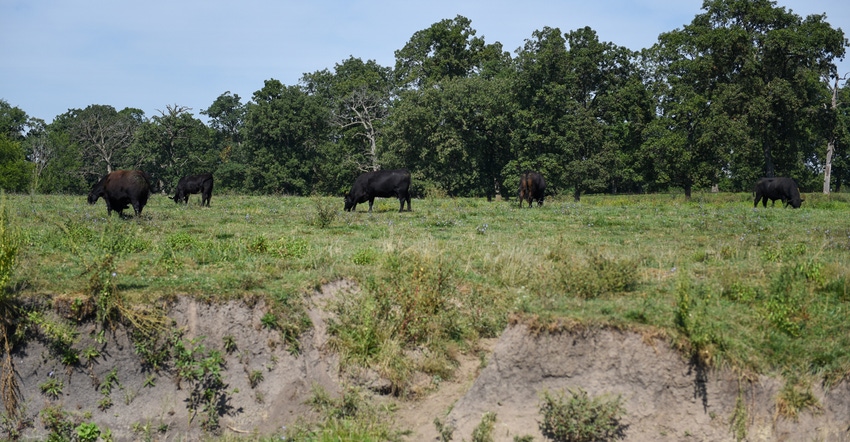Pay attention to pasture
Are you taking time to properly manage your pastures? Make sure your pasture program is the one best suited for your operation.

When it comes to selecting the right grazing system for your operation, there is no one-size-fits-all solution.
“Everybody’s soil is different, everybody’s topography is different, and their ability to have water in certain locations is different,” says Trevor Toland, owner of Toland’s River Oak Ranch near Macomb, Ill. Toland is a former member of the Illinois Pasture Project and credits this experience for some of his grazing knowledge. The ranch uses rotational grazing to focus on heifer development. “Everyone has a different situation. No one pasture program can be tailored to fit everyone.”
For anyone who has a decent amount of pastureland and is considering rotational grazing, Toland advises having at least eight paddocks. This approach allows for five days of grazing and then at least 35 days of rest and regrowth.
“On the sixth or seventh day of grazing, regrowth of grass begins,” Toland says. “Cattle prefer fresh grass and will begin to regraze, which can stunt growth and is hard on your pasture.”
He says rotational grazing limits overgrazing and in turn, can improve soil health, drought tolerance and even soil temperature.
“I was in the Illinois Pasture Project for five years,” he says. “We found out that the soil temperature is 20 degrees [F] cooler in a rotationally grazed pasture compared to a traditionally grazed pasture that had been eaten to the ground.”
The constant routine of rotational grazing also reduces fence pressure, he says. Cattle learn they will always have fresh grass to graze and won’t worry about getting to the other side of the fence.
Cover crop no-brainer
If your operation doesn’t have as much access to pasture acres, supplementing cover crops may be the avenue for you.
“I think cover crops really provide a lot of opportunity in Illinois,” says Doug Hanson, seed specialist at ProHarvest Seeds and a cattle producer near Danforth, Ill. “For a livestock producer that has some acres, cover crops can be used to complement their current grazing system.”
He explains that putting a cover crop like millet or rye out in the fall between a corn and soybean rotation can provide high-quality feed nutrition and increased soil nutrients in the field.
“Whether cattle graze or we chop it for feed in the spring, we have a cover crop that fits between two insured cash crops,” Hanson explains. “It’s kind of no-brainer to use this system when we are able to get feed at a reduced cost, and still have an insured cash crop.”
A key part to pasture production is being able to reflect and build upon what you have learned with each grazing season.
“My grazing system changes and adjusts every year just from things I learn — and depending on what Mother Nature throws at us,” Hanson says.
No matter which pasture program you choose, good management relies on observation and adaptation.
“In grazing, being adaptive is really important,” Toland says. “You have to be ready to get out there and look at the pasture every day.”
About the Author(s)
You May Also Like




.png?width=300&auto=webp&quality=80&disable=upscale)
